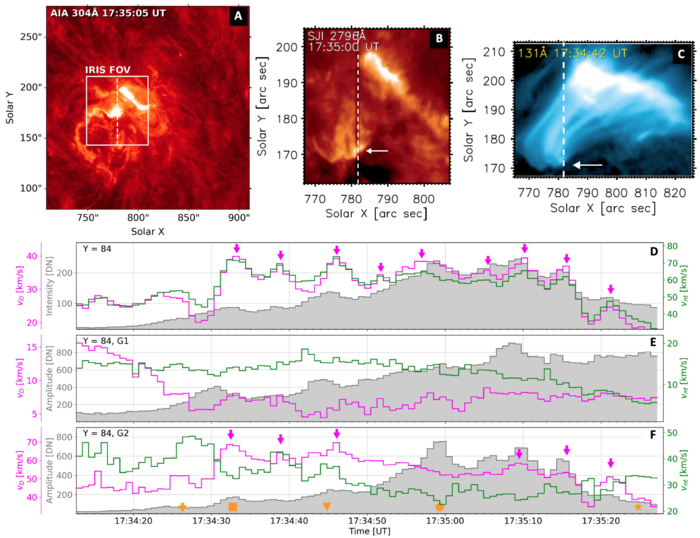Rapid variations of Si IV spectra in a flare observed by IRIS at a sub-second cadence
From RHESSI Wiki
(Created page with "{{Infobox Nugget |name = Nugget |title = Rapid variations of Si IV spectra in a flare observed by IRIS at a sub-second cadence |number = 440 |first_author = Juray LORINCIK |publi...") |
|||
| Line 3: | Line 3: | ||
|title = Rapid variations of Si IV spectra in a flare observed by IRIS at a sub-second cadence | |title = Rapid variations of Si IV spectra in a flare observed by IRIS at a sub-second cadence | ||
|number = 440 | |number = 440 | ||
| - | |first_author = | + | |first_author = Juraj LORINCIK |
|publish_date = November 14, 2022 | |publish_date = November 14, 2022 | ||
|next_nugget = TBD | |next_nugget = TBD | ||
Revision as of 17:00, 16 November 2022
| Nugget | |
|---|---|
| Number: | 440 |
| 1st Author: | Juraj LORINCIK |
| 2nd Author: | |
| Published: | November 14, 2022 |
| Next Nugget: | TBD |
| Previous Nugget: | A Significant Sudden Ionospheric Disturbance Associated with a Massive Gamma-ray Burst |
| List all | |
Introduction
Solar flares emit radiation in most wavelength ranges.e The emission lines formed in the solar transition region (TR)) prove to be very informative as probes for analyzing how the energy is released during solar flares. Observationally we define the TR in terms of electron temperature Te in the range .01-1 MK (or by ionization state). An example of a line often employed to analyze plasmas of flare ribbons is the Si IV 1402.77Â line (nominally formed at Te ~ 70,000 K). This is one of the strongest lines routinely observed by the IRIS satellite. Its profiles are typically redshifted in solar flares, and also broadened as a consequence of magnetohydrodynamic (MHD) turbulence. Some observational studies of Si IV line-broadening have reported high-frequency oscillations with periods of 10 s, in some cases accompanied by oscillations of other spectral properties of this line. This rapid variability in the line broadening presents a difficulty in studying the manifestations of the turbulence, highlighting the need for flare spectral observations carried-out at a very high cadence.
In this Nugget we describe rapid variability of the Si IV 1402.77 Â line in observations of the first major solar flare captured in a newly-designed IRIS observing mode enabling high time resolution (Ref. [1]).
Variability of Si IV line properties
We analyzed observations of the M1.5-class flare SOL2022-01-18 (Figure 1A) observed by IRIS at an unprecedented 0.8 s cadence. The slit of IRIS captured a bright kernel (panel (B)) in the southern ribbon corresponding to flare loop footpoints observed in SDO/AIA 131 Â (panel (C)). The Si IV 1402.77 Â line spectra observed in this kernel were double-peaked, consisting of the primary component consistently located close to the lines rest wavelength and a well-resolved secondary redshifted. In addition to the moment analysis typically used for this purpose, the properties of the Si IV profiles (intensity, Doppler velocity, non-thermal broadening) were therefore also determined via double-Gaussian fits.

| RHESSI Nugget Date | 14 November 2022 + |
| RHESSI Nugget First Author | Juraj LORINCIK + |
| RHESSI Nugget Index | 440 + |